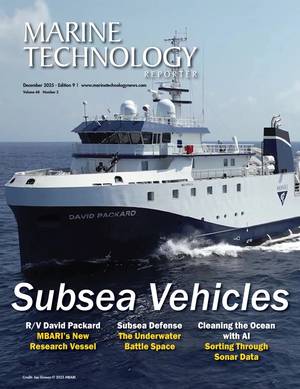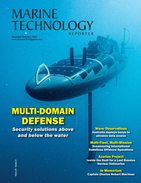Remote Remote Sensing – Environmental Monitoring
On the other hand, the active collectors of information emit energy in order to scan objects and areas whereupon a sensor then detects and measures the radiation that is reflected or backscattered from the target. The most common example of active remote sensing is RADAR, that emits radio waves and measures the time delay between emission and return, and also the lost of energy of the wave, establishing the location, height, speed and direction of an object.
To collect data on dangerous or inaccessible areas is possible only through the use of remote sensing. Remote sensing has many applications, including the monitoring of activities causing deforestation areas such as the basin of the Amazon, the study of ice and glaciers features in Arctic and Antarctic regions, and the sounding of the depth and bottom structure of coastal and ocean depths. Military intelligence during the period of the cold war made use of stand-off collection of data about dangerous border areas.
Remote sensing is also used to replace more costly and slower data collection methods on the ground, ensuring that areas or objects are not disturbed during the process. Land managers and all kind of governmental administrators require up-to-date, detailed information about land conditions that can be provided using many tools, but the most suitable in many situations is the remote sensing. It uses measurement devices and instruments mounted on satellites or in planes to produce images or representations of the Earth's surface.
The images obtained through remote sensing are used in many applications, like gas, oil and mineral exploration, ocean currents monitoring, land use planning or the monitoring of forests and agricultural areas. In order to analyze and compare the characteristics of erosion, pollution, vegetation distribution and forestry, weather or land use, data are collected using different devices like satellites, spacecrafts and aircrafts, buoys, ships or helicopters. Those characteristics offer important information for administrators or scientists, and must be observed, tracked, imaged and mapped.
Other major domains of interest for the process of remote sensing are archaeological investigations, military observation, city planning and geomorphology surveying. The natural long and short term phenomena and trends like El Nino are monitored by researchers who collect information and gather data from different parts of the Earth’s electromagnetic spectrum using different sensing and analysis systems: orbital platform, larger scale ground-based or aerial sensing systems. There are also for the use of different areas of earth sciences, agricultural fields like land usage and conservation, the management of natural resources and national security.
Some of the most intensively surveyed regions are the coastal seas; they are under heavy anthropogenic stress due to development of port, both military and commercial, and increase of the ship traffic. The increase in concentration of suspended particulate matter (SPM) in seawater is inevitable along the dredging operations. While SPM concentration increases, the water transparency decreases which leads to worsening of underwater light conditions. An indicator of water quality in the coastal zone is the growth of benthic macro-algae which are affected by the diminishing of light intensity that penetrates to the sea bottom.
Underwater light conditions worsen in the proximity of the harbors and in the coastal sea. But, if the dredging is carried out mainly from late autumn to early spring when the growth of the macro-algae is limited by water temperature, the diminishing of underwater light intensity shows a minor effect on the biomass.
When sensitive and critical marine areas are close to the dredge site it is crucial to monitor the SPM transport and distribution along with the estimation of dredging impact on marine environment. The monitoring system combines satellite remote sensing and numerical modeling and is supported by measurements. The modeling part combines a hydrodynamic model, a particle transport model and a benthic macro-algae growth model. A simple approach is followed in the formulation of the system and determination of the required relationships that are based on the measurements. The monitoring system was applied to Pakri Bay during dredging in Paldiski North harbor which lasted one and a half year. Comparison of SPM distributions from remote sensing images and numerical model results showed qualitatively similar patterns. Quantitative comparison allowed separating SPM concentrations due to the dredging operations from the background values of natural origin.
Remote sensing has numerous applications: The SONAR system, comprising the passive sonar, situation when the operator is listening and registering the sounds produced by another object, which can be manmade or marine fauna and the active sonar; in this case, pulses of sounds are emitted and the operator is listening for the echoes, produced when sound emitted encounters different objects. Sonar is used to detect, range and measure underwater objects or relief. The altimeters mounted on satellites use laser and radar technology to provide a wide range of data. To map features on the seafloor to a resolution of around a mile they measure the bulge of water caused by gravity. To determine the wind speed and direction, and the surface ocean currents and their directions, the altimeters measure the height and wave-length of ocean waves.
Space borne radar altimeters send a microwave pulse to the ocean’s surface and time how long it takes to return. These instruments have proven to be excellent tools for mapping ocean-surface topography, the hills and valleys of the sea surface. The technology uses a microwave radiometer that corrects any delay that may be caused by the presence of vapors of water in the atmosphere. They also have the capability of correcting the influence of electrons in the dry air mass of the atmosphere and in its superior part, the ionosphere. It is possible to determine the sea-surface height to within one inch, through combining the data collected with the precise location of the spacecraft. Information on wind speed and the height of ocean waves are also provided through analyzing the strength and shape of the returning signal. In the end, scientists can determine the speed and direction of marine currents, the distribution of heat on ocean surface and to estimate climate variations.












 December 2025
December 2025



